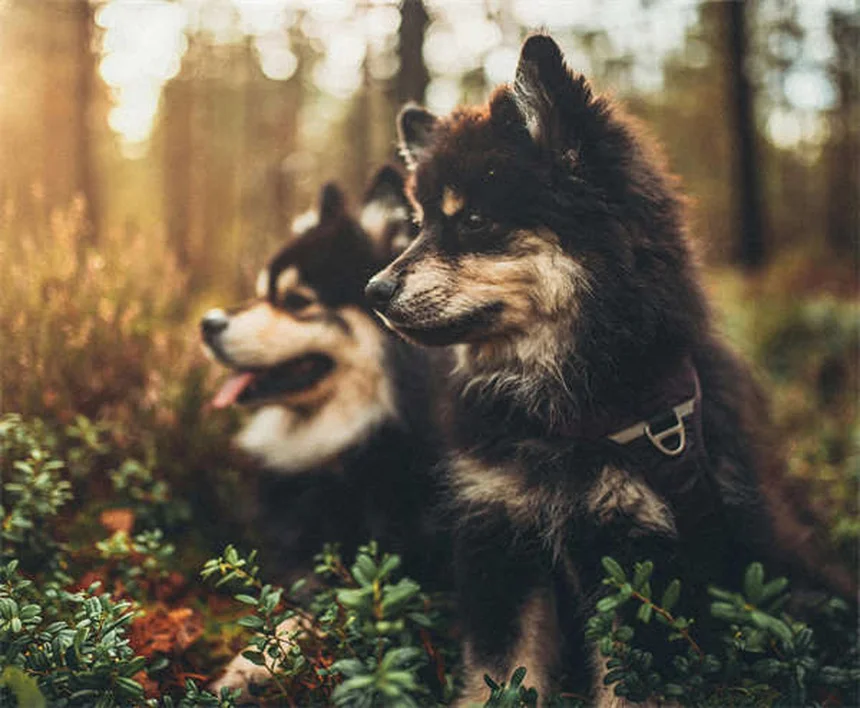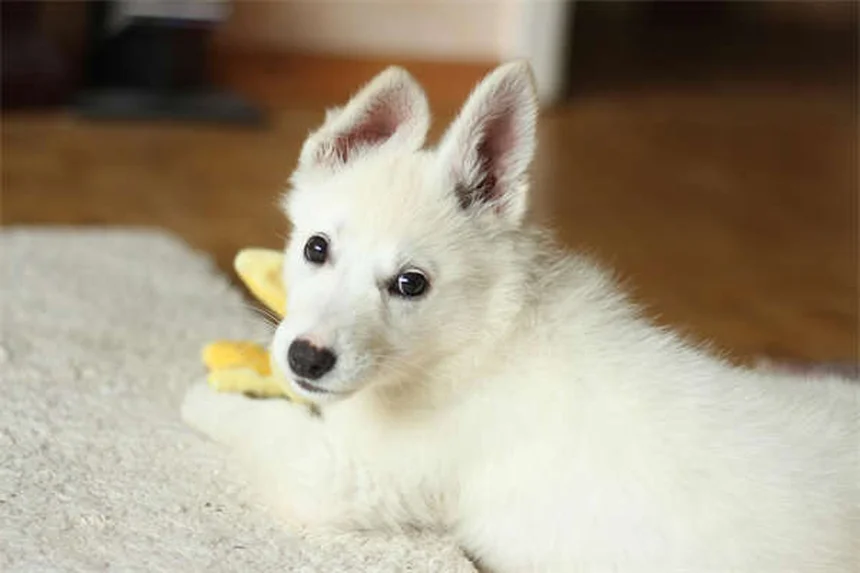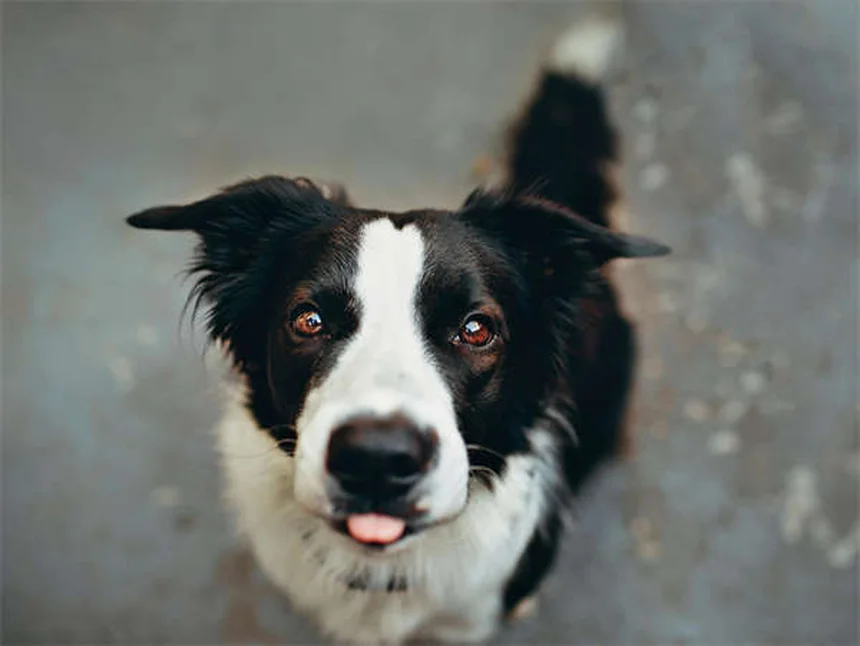How to Crate Train a Puppy: 7 Easy Steps for Success
Wondering how to crate train a puppy the right way? Here's the deal: crate training is one of the best things you can do for your new furry friend! Not only does it give them their own cozy den, but it also makes potty training way easier and keeps them safe when you can't supervise.I've helped dozens of puppy owners through this process, and let me tell you - when done right, your pup will actually love their crate. The key is taking it slow and making it a positive experience. In this guide, I'll walk you through the exact steps that worked for my dogs and countless others I've trained.We'll cover everything from choosing the perfect crate to handling those first overnight stays. Trust me, putting in the time now will pay off big time with a well-adjusted, happy dog!
E.g. :Dog's Eyes Red? 5 Urgent Signs You Should Never Ignore
- 1、Why Crate Training Your Puppy Rocks
- 2、Picking the Perfect Puppy Crate
- 3、The Step-by-Step Crate Training Guide
- 4、Common Crate Training Questions Answered
- 5、Pro Tips for Crate Training Success
- 6、Beyond the Basics: Advanced Crate Training Benefits
- 7、Crate Training for Different Dog Personalities
- 8、Crate Alternatives That Work
- 9、When Crate Training Isn't Working
- 10、Crate Training for Adult Dogs
- 11、FAQs
Why Crate Training Your Puppy Rocks
Your Puppy's Personal Safe Space
Let me tell you something - dogs absolutely love having their own little den. It's like their version of a cozy bedroom where they can chill when life gets overwhelming. My neighbor's golden retriever, Max, runs to his crate whenever the vacuum cleaner comes out - it's his safe haven!
Here's the cool part: crates tap into your puppy's natural instincts. Wild dogs would dig out little dens to sleep in, and your pup's crate gives them that same secure feeling. Pro tip: Throw in a soft blanket and one of your old t-shirts (with your scent) to make it extra comforting.
Potty Training Made Easier
Okay, real talk - who enjoys cleaning up puppy accidents? Nobody. That's where crate training becomes your secret weapon. Dogs naturally avoid soiling where they sleep, so the crate teaches them bladder control.
I remember when I was training my beagle, Lucy. We'd do short crate sessions after meals, then straight outside to do her business. Within two weeks, she was signaling when she needed to go out! The crate was our potty training MVP.
| Puppy Age | Max Crate Time | Potty Breaks Needed |
|---|---|---|
| 8-10 weeks | 30-60 minutes | Every 1-2 hours |
| 10-12 weeks | 1-2 hours | Every 2-3 hours |
| 3-6 months | 3-4 hours | Every 3-4 hours |
Picking the Perfect Puppy Crate
 Photos provided by pixabay
Photos provided by pixabay
Size Matters - Get It Right
Here's a question I get all the time: "How big should my puppy's crate be?" Great question! The crate should be just big enough for your pup to stand up, turn around, and lie down comfortably - but not so big that they can use one end as a bathroom.
When my cousin got a German shepherd puppy, she made the smart move of buying an adult-sized crate with a divider. As little Bruno grew, she just moved the divider back. Saved her money and hassle in the long run!
Features That Make Life Easier
Not all crates are created equal. Here's what to look for:
- Sturdy construction - Especially if you've got a chewer
- Multiple doors - Makes access way easier
- Easy-to-clean material - Trust me, you'll thank me later
- Rounded corners - Safety first!
- Portability - Collapsible crates are lifesavers
The Step-by-Step Crate Training Guide
Making the Crate Irresistible
First things first - we want your puppy to love their crate. Start by placing it in your main living area where all the action happens. Toss some treats inside and let your pup explore at their own pace.
Here's a trick that worked wonders for me: I'd randomly drop treats in the crate throughout the day. My puppy started checking it constantly, like it was a magical treat dispenser! Before long, she was napping in there voluntarily.
 Photos provided by pixabay
Photos provided by pixabay
Size Matters - Get It Right
Now here's where the magic happens. Start feeding your puppy their meals in the crate. At first, keep the door open. As they get comfortable, you can begin closing the door during meals - starting with just a minute, then gradually increasing.
Remember my beagle Lucy? She was so food motivated that she'd run into her crate when she heard me getting her bowl ready. The crate became her happy place because it meant delicious things were coming!
Common Crate Training Questions Answered
How Long Until My Puppy Is Trained?
Here's the thing - every puppy is different. Some catch on in a few days, others need weeks. The key is consistency and patience. Rushing the process can actually set you back.
Think of it like teaching a kid to ride a bike. Some zoom off right away, others need training wheels longer. Neither is wrong - they just learn at their own pace.
Should I Ignore My Puppy's Crying?
"Is it cruel to let my puppy cry in the crate?" Another great question! The answer is - it depends. If they're just protesting, a little whining is normal. But if they're panicking or need to potty, you should respond.
Here's how I tell the difference: Protest whining usually stops after 10-15 minutes. Real distress or bathroom needs? That crying escalates. Always check if it's been a while since their last potty break!
Pro Tips for Crate Training Success
 Photos provided by pixabay
Photos provided by pixabay
Size Matters - Get It Right
Where you put the crate makes a huge difference. At night, keep it in your bedroom so your puppy feels secure. During the day, move it to where you hang out most. This helps prevent loneliness.
My friend made the mistake of keeping his crate in the basement. His poor puppy felt isolated and took twice as long to crate train. Lesson learned!
Never Use the Crate as Punishment
This is so important I'm putting it in bold: Never use the crate as a timeout space. We want the crate to equal happy feelings only. If you associate it with punishment, your puppy will resist going in.
Instead, make it the place where awesome things happen - treats, meals, favorite toys. That positive association is golden for training success!
Beyond the Basics: Advanced Crate Training Benefits
Travel Made Paw-some
Ever tried taking your untrained pup on a road trip? Yikes. A crate-trained dog makes traveling so much easier. I'll never forget when I had to transport my sister's untrained poodle - let's just say my car seats will never be the same!
Crate training means you can safely take your dog anywhere - hotels, vacations, even flights. Airlines actually require crates for pet travel. My buddy's golden retriever happily chills in his crate during 5-hour drives to the beach. Now that's what I call a road trip pro!
Emergency Preparedness
Here's something most people don't think about: crates are lifesavers during emergencies. When tornado warnings hit my town last year, my neighbor's crate-trained dogs were safely secured in minutes. The untrained dogs? Let's say it involved a lot of chasing and treats.
Natural disasters, vet emergencies, or even just home repairs - having a dog comfortable in a crate means one less thing to worry about when things get crazy. That peace of mind is priceless!
Crate Training for Different Dog Personalities
The Anxious Pup
Got a nervous Nelly? Crates work wonders for anxious dogs. My aunt's rescue terrier would shake during thunderstorms - until she created a cozy crate cave with sound-dampening blankets. Now it's his go-to safe space when he's feeling overwhelmed.
The key is gradual introduction. Start with the door open, feed meals nearby, then slowly move them closer. For super anxious dogs, try covering the crate with a light blanket to create that den-like feeling. Patience pays off!
The Energizer Bunny
High-energy breeds need crate training too - maybe even more! My cousin's border collie puppy would literally run circles until he collapsed. Scheduled crate naps became their saving grace.
Here's our routine that worked: 1 hour of intense play, then 2 hours of crate rest. Rinse and repeat. It taught the pup to actually relax instead of being constantly on the go. Total game changer!
| Dog Type | Best Crate Approach | Average Adjustment Time |
|---|---|---|
| Anxious/Nervous | Slow introduction, covered crate | 3-6 weeks |
| High Energy | Scheduled crate naps | 1-3 weeks |
| Stubborn | High-value treats only in crate | 4-8 weeks |
Crate Alternatives That Work
Exercise Pens - The Roomier Option
Not every dog takes to crates, and that's okay! Exercise pens give more space while still providing boundaries. My neighbor's great dane puppy outgrew his crate in like two weeks - they switched to a pen with a bed and toys, and it worked perfectly.
The trick is making the pen just as appealing as a crate. Same rules apply - comfy bedding, special toys, and never use it for punishment. It's basically a crate's big brother!
Baby Gates - For the Crate-Resistant
Some dogs just won't crate, no matter what you try. For these stubborn pups, baby-gating a small room or corner can work. My sister's bulldog would literally hold his bladder for 12 hours rather than go in a crate - but he was fine in a gated laundry room with pee pads.
The key is consistency. Whether it's a crate, pen, or gated area, the principles are the same: safe space, positive associations, and gradual training. Find what works for your unique pup!
When Crate Training Isn't Working
Troubleshooting Common Issues
What if your puppy absolutely hates the crate? First, check these boxes: Is the crate the right size? Is it in a good location? Are you making it positive enough? Sometimes just moving it near a window makes all the difference.
For my friend's husky, adding a crate fan solved everything - turns out the pup was overheating! Little adjustments can make big impacts. Don't give up after the first try!
When to Call in the Pros
If you've tried everything and your dog still panics in the crate, it might be time for professional help. A good trainer can spot issues you might miss. I once saw a trainer identify that a dog's crate anxiety stemmed from a bad experience at the breeder's - something the owners would never have guessed!
Remember, there's no shame in getting help. Your dog's comfort and your sanity are worth it. As my vet always says: "Better to ask for help early than create a lifelong phobia!"
Crate Training for Adult Dogs
Yes, You Can Teach an Old Dog New Tricks
Think crate training is just for puppies? Think again! I've successfully crate trained several adult rescues. The process takes longer, but the principles are the same. My current shelter dog took about a month to love his crate - now he naps in there voluntarily!
The secret? Extra patience and even higher-value treats. For adult dogs, we're breaking existing habits, not just creating new ones. But it's absolutely doable with consistency.
Special Considerations for Rescues
Rescue dogs often come with baggage - sometimes literally! Many associate crates with shelter life or bad experiences. For these pups, we need to go extra slow and watch for signs of stress.
What worked for my rescue: leaving the crate open 24/7 with cozy blankets and occasionally hiding chicken in there. Took weeks before she'd go in voluntarily, but now? Her crate is her happy place. That transformation was worth every minute!
E.g. :Crate training advice for 9 week old puppy : r/puppy101
FAQs
Q: How long does it take to crate train a puppy?
A: The timeline for crate training varies for each puppy, but here's what I've seen in my experience. Most puppies will adjust within 2-4 weeks if you're consistent with the training. However, some quick learners might be comfortable in just a few days, while more cautious pups may need a month or longer. The key is going at your puppy's pace - never rush the process. I remember working with a shy rescue who took nearly 6 weeks to fully accept her crate, but now she chooses to sleep in it every night! Factors like your puppy's age, temperament, and previous experiences all play a role. Just stay patient and keep those positive associations coming!
Q: Is it cruel to crate train a puppy?
A: This is such an important question! When done correctly, crate training is not cruel at all - in fact, it's the opposite! Dogs are den animals by nature, and a properly sized crate gives them that safe, cozy space they instinctively crave. The problems come when people misuse crates by leaving puppies in too long or using them as punishment. I always tell my clients: if your puppy is happy to go in their crate and sleeps peacefully there, you're doing it right. My own dogs will often choose to nap in their crates even when they're not required to - that's how you know it's become their personal safe space rather than a prison.
Q: How long can I leave my puppy in the crate?
A: Puppy bladder control is limited, so crate time needs to match their age. Here's the general rule of thumb I recommend: Take your puppy's age in months and add one - that's the maximum hours they can typically hold it. So a 2-month-old puppy needs a potty break every 3 hours max. But remember, this is just for daytime crating when you're home. Overnight, puppies can usually hold it a bit longer since they're sleeping. Always watch for signs like whining or circling - that's your cue they need out ASAP. When I was training my Labrador puppy, I set alarms every 2 hours at night for the first few weeks. Was I tired? Absolutely. But it prevented accidents and made house training so much easier!
Q: Should I put food and water in my puppy's crate?
A: Great question! Here's my professional advice: food yes, water no - with some important exceptions. During meal times, absolutely feed your puppy in their crate to build positive associations. But water bowls in the crate can lead to accidents and disrupt potty training. That said, if you'll be gone more than 2 hours or it's extremely hot, leave a small amount of water in a no-spill bowl. I've found the best approach is to offer water frequently when your puppy is out of the crate, especially after playtime and before crating. One of my clients used an ice cube in the crate on hot days - it provided hydration without creating a mess!
Q: What if my puppy cries in the crate at night?
A: Nighttime crate crying is super common, and here's how I handle it. First, check if they actually need to potty - young puppies often do! If it's been a while since their last break, take them out quietly (no playtime) then straight back in. If they're just protesting, try these tricks that worked for me: place the crate right next to your bed so they can smell you, cover it with a light blanket to create a den-like feel, and put in a warm water bottle wrapped in a towel (like a snuggle buddy). The key is not to reward the crying with attention, but also not to ignore genuine distress. Most puppies adjust within 3-5 nights if you're consistent!







